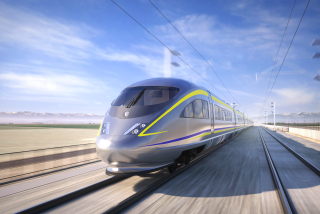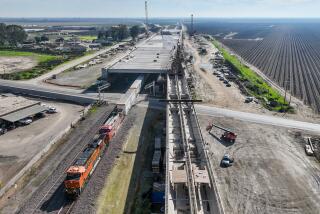Elon Musk’s Boring Co. talked with New York about building transit tunnels
- Share via
Amazon.com Inc. isn’t the only tech-related company having a hard time in New York this year. Elon Musk’s Boring Co. at one point talked with New York City-area officials about connecting John F. Kennedy International Airport with Manhattan directly via tunnel, a route long considered a kind of holy grail for weary transit riders traveling into and out of the city. But regional engineers raised concerns over the Boring Co. tunnel’s feasibility.
Possible problems identified by the engineers included ventilation issues, the potential impact on existing New York tunnels and the logistics of emergency response, according to a person who reviewed the engineers’ report and asked not to be identified because the matter was private. The report was completed in recent weeks, the person said.
“New York officials informally reached out to us last year to see if our capabilities would be useful to them,” a Boring Co. spokesman said. “We get approached by tons of cities who are similarly interested in learning more.” The Port Authority of New York and New Jersey declined to comment.
Some of the issues flagged by the engineers would affect any new tunnel under the East River, which separates the boroughs of Manhattan and Queens, where the airport is located. But there were also other issues particular to Boring Co., which proposed a pair of tunnels of less than 14 feet in diameter, about half the width of most one-lane tunnels, the person said.
A Boring Co. spokesman emphasized that the company’s discussions were preliminary and did not rise to the level of a detailed proposal from the company.
The Boring Co. outline called for running autonomous electric vehicles in rapid succession through the tunnels, one for inbound and one for outbound, a concept that is similar to what the company proposed for a project in Chicago and what it outlines on its website. The narrow width keeps tunneling costs and time down, but it led to questions about how emergency response teams would get in and out if necessary, the person said.
On its website, Boring Co. compares its system to subway rail tunnels, saying that like subways, it will have regular emergency exits — but unlike subways, will not have a high-voltage third rail. Exit paths in the tunnel will be “safer and wider” than existing comparable infrastructure, “despite the reduced tunnel diameter,” the site says. It also says that fire risk is low not just because of the lack of a third rail, but also because of the tunnel’s non-flammable concrete lining.
The engineers evaluating the JFK project also raised concerns about how additional underground construction would affect the structural integrity of the tunnels that are already there, the person said. A Boring Co. spokesman said the company’s tunnels are constructed to have no impact on existing infrastructure.
Boring Co. has been in talks with several municipalities about its tunnel-based transit systems, which it calls “Loop” for short distances. In December, the company held a party to celebrate the opening of a test tunnel near its headquarters in Hawthorne, inviting local transportation officials from around the country for tours. And in February, the mayor of San Jose said the city was discussing with Boring Co. the possibility of a tunnel between San Jose International Airport and the transit system.
At its Hawthorne testing location, the company has kept the welcome mat out for other officials, regularly hosting potential customers.
In Los Angeles, Boring Co. dropped its plans last year to dig beneath Sepulveda Boulevard on the Westside, months after a lawsuit alleged that the city violated state law when it sought to exempt the tunnel from environmental review. The company said that instead, it would focus on an underground link between Dodger Stadium and a Metro station about 3½ miles away.
The idea of a nonstop ride between JFK Airport and Manhattan has been studied from time to time since the 1960s. It resurfaced repeatedly in recent decades but has never gained political traction, in part because of the expense. Current New York Gov. Andrew Cuomo revived the idea in a speech two years ago.
Today, riders can get to JFK via public transit but have to transfer from the subway to the AirTrain people-mover. That connection to JFK opened in 2003, and links the airport to nearby subway and train stations in Queens. The city also plans to conduct an environmental study for a proposed 1½-mile tunnel connecting LaGuardia Airport to local public transportation.
More to Read
Inside the business of entertainment
The Wide Shot brings you news, analysis and insights on everything from streaming wars to production — and what it all means for the future.
You may occasionally receive promotional content from the Los Angeles Times.










